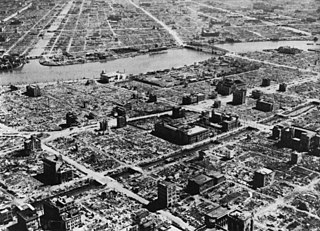
Strategic bombing is a systematically organized and executed attack from the air which can utilize strategic bombers, long- or medium-range missiles, or nuclear-armed fighter-bomber aircraft to attack targets deemed vital to the enemy's war-making capability. It is a military strategy used in total war with the goal of defeating the enemy by destroying its morale, its economic ability to produce and transport materiel to the theatres of military operations, or both. The term terror bombing is used to describe the strategic bombing of civilian targets without military value, in the hope of damaging an enemy's morale.

Psychological warfare (PSYWAR), or the basic aspects of modern psychological operations (PsyOp), have been known by many other names or terms, including Military Information Support Operations (MISO), Psy Ops, political warfare, "Hearts and Minds", and propaganda. The term is used "to denote any action which is practiced mainly by psychological methods with the aim of evoking a planned psychological reaction in other people".
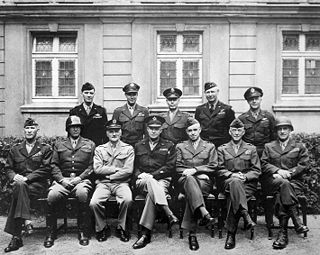
The European Theater of Operations, United States Army (ETOUSA) was a theater of Operations responsible for directing United States Army operations throughout the European theatre of World War II, from 1942 to 1945. It commanded Army Ground Forces (AGF), United States Army Air Forces (USAAF), and Army Service Forces (ASF) operations north of Italy and the Mediterranean coast. It was bordered to the south by the North African Theater of Operations, United States Army (NATOUSA), which later became the Mediterranean Theater of Operations, United States Army (MTOUSA).

Soldatensender Calais (G.9) was a British black propaganda broadcaster during the Second World War operated by the Political Warfare Executive. It pretended to be a station of the German military broadcasting network. The station was in operation between 14 November 1943 and 30 April 1945, when it ceased operations.

Supreme Headquarters Allied Expeditionary Force was the headquarters of the Commander of Allied forces in northwest Europe, from late 1943 until the end of World War II. US General Dwight D. Eisenhower was the commander in SHAEF throughout its existence. The position itself shares a common lineage with Supreme Allied Commander Europe and Atlantic, but they are different titles.
The Allied Expeditionary Air Force (AEAF), also known as the Allied Armies’ Expeditionary Air Force (AAEAF), was the expeditionary warfare component of the Supreme Headquarters Allied Expeditionary Force (SHAEF) which controlled the tactical air power of the Allied forces during Operation Overlord during World War II in 1944.

During World War II, the Political Warfare Executive (PWE) was a British clandestine body created to produce and disseminate both white and black propaganda, with the aim of damaging enemy morale and sustaining the morale of countries occupied or allied with Nazi Germany.

The United States Office of War Information (OWI) was a United States government agency created during World War II. The OWI operated from June 1942 until September 1945. Through radio broadcasts, newspapers, posters, photographs, films and other forms of media, the OWI was the connection between the battlefront and civilian communities. The office also established several overseas branches, which launched a large-scale information and propaganda campaign abroad. From 1942 to 1945, the OWI revised or discarded any film scripts reviewed by them that portrayed the United States in a negative light, including anti-war material.
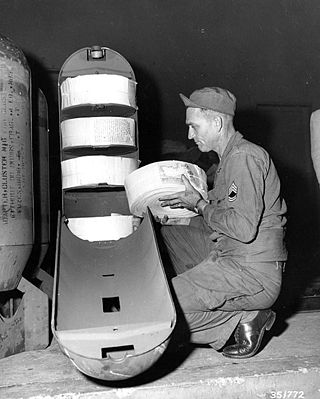
Airborne leaflet propaganda is a form of psychological warfare in which leaflets (flyers) are scattered in the air.
Radio 1212 or Sender 11212 or Nachtsender 1212 was a black propaganda radio station operated from 1944 to 1945 by the Psychological Warfare Branch of the US Office of War Information (OWI) under the direction of CBS radio chief William S. Paley, who was based in London. Nachtsender 1212 broadcast from the Grand Duchy of Luxembourg using the former commercial radio facilities known as Radio Luxembourg, which had been occupied and then liberated from German control during World War II.

Psychological operations (PSYOP) are operations to convey selected information and indicators to audiences to influence their motives and objective reasoning, and ultimately the behavior of governments, organizations, groups, and large foreign powers.
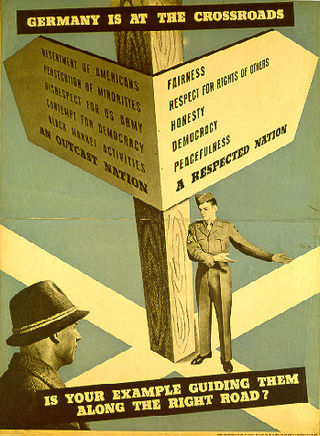
The Office of Military Government, United States was the United States military-established government created shortly after the end of hostilities in occupied Germany in World War II. Under General Lucius D. Clay, it administered the area of Germany and sector of Berlin controlled by the United States Army. The Allied Control Council comprised military authorities from the United States, the United Kingdom, the Soviet Union and France. Though created on January 1, 1946, OMGUS previously reported to the U.S. Group Control Council, Germany (USGCC), which existed from May 8, 1945, until October 1, 1945. OMGUS was eliminated on December 5, 1949, and the U.S. High Commissioner for Germany assumed control of its functions.
The Information Control Division (ICD) was a department of the Office of Military Government, United States (OMGUS) during the early part of the post-war American occupation of Germany following World War II focused on controlling and altering German media to promote democratic values and to move Germany away from Nazism. Formed on 12 May 1945 from the Psychological Warfare Division of SHAEF (PWD/SHAEF), the ICD was led by Robert A. McClure, with a mission defined as:
to provide the Germans with information, which will influence them to understand and accept the United States programme of occupation, and to establish for themselves a stable, peaceful, and acceptable government. Such information will impress upon the Germans the totality of their military defeat, the impossibility of rearmament, the responsibility of the individual German for war and atrocities, the disastrous effects of the structure and system of National Socialism on Germany and the world, and the possibility that through work and cooperation Germany may again be accepted into the family of nations.
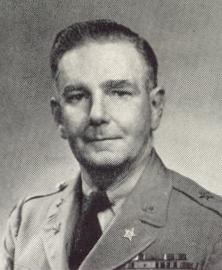
Robert Alexis McClure was an American general, psychological warfare specialist, and is considered the father of U.S. Army Special Warfare.
In late February 1945, when the defeat of Germany appeared imminent, the Supreme Headquarters Allied Expeditionary Force (SHAEF) was provided with a mandate for dispatching troops whose mission would be to secure the safety of Allied Prisoners of War and to provide for their early evacuation. Early in 1945 SHAEF approached UK Director Military Operations and US OSS to assemble a force of 120 parachuteable contact and reconnaissance teams "to assist existing maesures of relief for PW and after the collapse of GERMANY" - termed "Eclipse". The aim of these teams would be to:
National governments deal in both intelligence and military special operations functions that either should be completely secret, or simply cannot be linked to the sponsor. It is a continuing and unsolved question for governments whether clandestine intelligence collection and covert action should be under the same agency. The arguments for doing so include having centralized functions for monitoring covert action and clandestine HUMINT and making sure they do not conflict, as well as avoiding duplication in common services such as cover identity support, counterespionage, and secret communications. The arguments against doing so suggest that the management of the two activities takes a quite different mindset and skills, in part because clandestine collection almost always is on a slower timeline than covert action.

The 547th Intelligence Squadron is an active United States Air Force (USAF) unit. It is assigned to the 365th Intelligence, Surveillance and Reconnaissance Group, stationed at Nellis Air Force Base, Nevada. The squadron serves as the USAFs center for adversary tactics analysis; develops intelligence threat training programs; defines potential threats to the US, provides intelligence support to Air Combat Command's test and evaluation programs and live-fly exercises.
Morale Operations was a branch of the Office of Strategic Services during World War II. It utilized psychological warfare, particularly propaganda, to produce specific psychological reactions in both the general population and military forces of the Axis powers in support of larger Allied political and military objectives.
The Alpine Fortress or Alpine Redoubt was the World War II German national redoubt planned by Reichsführer-SS Heinrich Himmler in November and December 1943. Plans envisaged Germany's government and armed forces retreating to an area from "southern Bavaria across western Austria to northern Italy". The scheme was never fully endorsed by Hitler, and no serious attempt was made to put it into operation, although the concept served as an effective tool of propaganda and military deception carried out by the Germans in the final stages of the war. After surrendering to the Americans, the Wehrmacht General Kurt Dittmar told them that the redoubt never existed.
Ops (B) was an Allied military deception planning department, based in the United Kingdom, during the Second World War. It was set up under Colonel Jervis-Read in April 1943 as a department of Chief of Staff to the Supreme Allied Commander (COSSAC), an operational planning department with a focus on western Europe. That year, Allied high command had decided that the main Allied thrust would be in southern Europe, and Ops (B) was tasked with tying down German forces on the west coast in general, and drawing out the Luftwaffe in particular.













